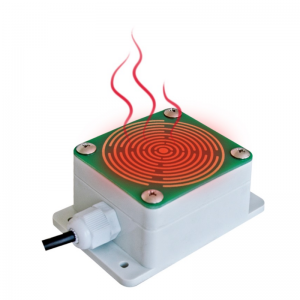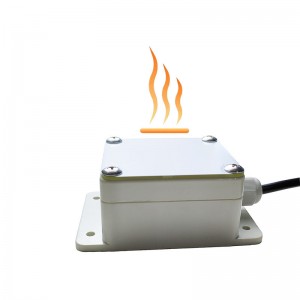Today, with extreme weather frequently occurring due to climate change, the precise and rapid identification of precipitation patterns has become the key to ensuring safety and improving efficiency. With its outstanding reliability and response speed, HONDE optical rain and snow sensors are actively used in the transportation, energy and agricultural sectors in many countries around the world, providing crucial “weather perception” for automation systems.
Northern Europe: The “Smart Switch” for Winter Transportation
During the long winter in Sweden, road safety is constantly challenged by ice and snow. Rain and snow sensors installed along key Bridges and highways can accurately distinguish between rainfall, snowfall and icing conditions. Once snowflakes are detected falling, the data will be instantly transmitted to the road management system, which will automatically activate the de-icing agent spraying device and trigger the variable message sign to issue a warning to the driver. This automated response mechanism driven by rain and snow sensors has significantly enhanced the timeliness of road maintenance and built an invisible defense line for public safety.
North America: The “Watchful Eye” of Aviation Efficiency
At Chicago O ‘Hare International Airport in the United States, every minute of delay means a huge economic loss. The HONDE rain and snow sensors deployed beside the runway provide the ground command center with the most accurate real-time data on precipitation types. This information is crucial for determining whether the aircraft needs de-icing operations. Accurate judgment avoids unnecessary deicing procedures and also buys precious time for dispatching when bad weather comes, effectively improving the punctuality rate and safety of flights in complex weather conditions.
East Asia: The “Temperature Control Outpost” of Facility Agriculture
In high-end glass greenhouses in Hokkaido, Japan, low nighttime temperatures and condensation are the “invisible killers” for high-value crops such as strawberries. The rain and snow sensors installed on the top of the greenhouse can keenly detect the occurrence of the first snow or freezing rain. After receiving the signal, the system can automatically close the skylight and start the heating equipment to prevent cold air and moisture from entering, creating a stable microclimate for the delicate fruits and ensuring the quality and yield of the crops.
Alps: The “Ice Guardian” for Railway Safety
In the Swiss Alps, the smooth operation of railway lines is the lifeline connecting urban and rural areas. In the severe winter, the icing of the catenary is a major safety hazard for railway transportation. The HONDE rain and snow sensors deployed along the line can continuously monitor freezing rain or wet snow weather that may cause icing 7×24 hours a day. Once a risk is detected, the data will immediately trigger the catenary heating system to prevent problems before they occur and fully ensure the safe operation of the alpine railway under all-weather conditions.
From the smart highways of Scandinavia to the busy aviation hubs of North America; From the meticulous farms in East Asia to the winding railways in the Alps, rain and snow sensors are becoming the “first responders” for all kinds of infrastructure to deal with rain and snow weather with their millisecond-level perception accuracy. In the process of the world jointly addressing climate challenges, this seemingly minor technology is playing an irreplaceable and crucial role.
For more sensor information, please contact Honde Technology Co., LTD.
WhatsApp: +86-15210548582
Email: info@hondetech.com
Company website: www.hondetechco.com
Post time: Oct-29-2025



